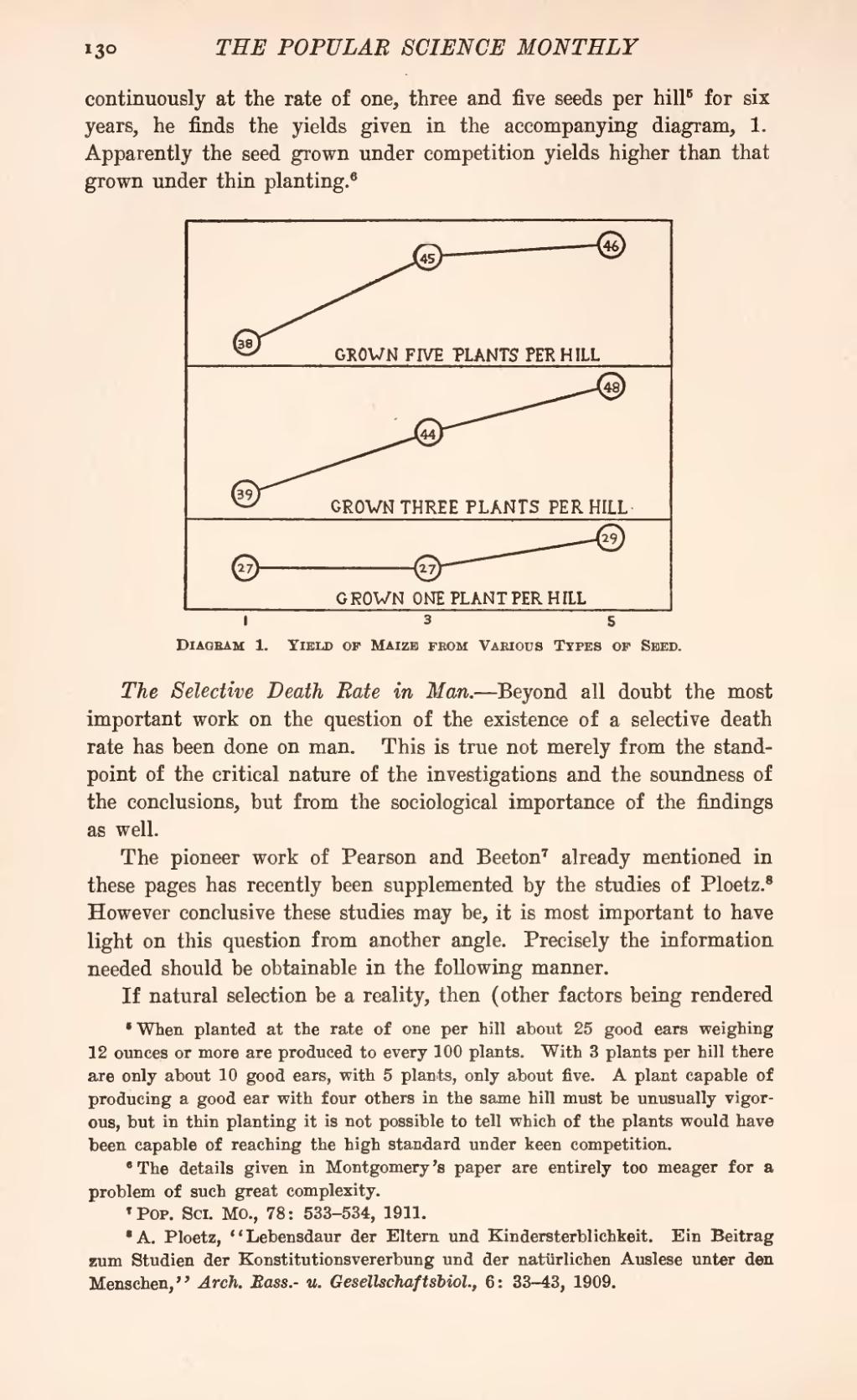continuously at the rate of one, three and five seeds per hill[1] for six years, he finds the yields given in the accompanying diagram, 1. Apparently the seed grown under competition yields higher than that grown under thin planting.[2]
The Selective Death Rate in Man.—Beyond all doubt the most important work on the question of the existence of a selective death rate has been done on man. This is true not merely from the standpoint of the critical nature of the investigations and the soundness of the conclusions, but from the sociological importance of the findings as well.
The pioneer work of Pearson and Beeton[3] already mentioned in these pages has recently been supplemented by the studies of Ploetz.[4] However conclusive these studies may be, it is most important to have light on this question from another angle. Precisely the information needed should be obtainable in the following manner.
If natural selection be a reality, then (other factors being rendered
- ↑ When planted at the rate of one per hill about 25 good ears weighing 12 ounces or more are produced to every 100 plants. With 3 plants per hill there are only about 10 good ears, with 5 plants, only about five. A plant capable of producing a good ear with four others in the same hill must be unusually vigorous, but in thin planting it is not possible to tell which of the plants would have been capable of reaching the high standard under keen competition.
- ↑ The details given in Montgomery 's paper are entirely too meager for a problem of such great complexity.
- ↑ Pop. Sci. Mo., 78: 533-534, 1911.
- ↑ A. Ploetz, "Lebensdaur der Eltern und Kindersterblichkeit. Ein Beitrag zum Studien der Konstitutionsvererbung und der natürlichen Auslese unter den Menschen," Arch. Bass.-u. Gesellschaftsbiol., 6: 33-43, 1909.

